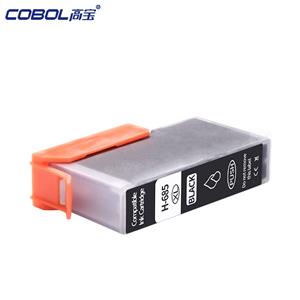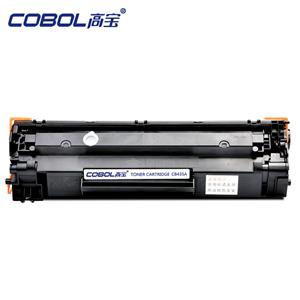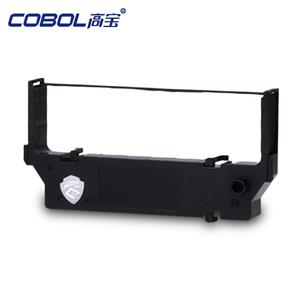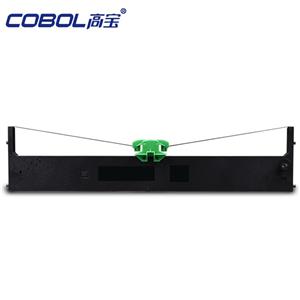What is the LQ 310 dot matrix printer?
Amidst the current diversification of office and commercial document printing needs, the LQ 310 dot matrix printer, a widely used printer with unique technical advantages, continues to hold an irreplaceable position in specific industries and scenarios.
This article will focus on the topic of "What is the LQ 310 dot matrix printer?" and systematically analyze its definition, structural composition, operating principle, performance characteristics, and technical specifications to help readers fully understand the professional attributes and technical essence of this printing device.
What is the LQ 310 dot matrix printer?
The LQ 310 dot matrix printer is a dot matrix printer model that uses dot matrix printing technology and is part of Epson's LQ series. Its core feature is that the needles on the print head strike the ink ribbon, transferring ink in a dot matrix format onto the print medium, thereby forming characters, symbols, or graphics.
Unlike inkjet and laser printers, the LQ 310 dot matrix printer doesn't rely on liquid ink jets or powdered toner fusing. Instead, it uses mechanical impact to create images. The key advantage of this method is that it can print simultaneously on multiple layers of carbon paper and maintains stability even under long, high-load conditions.
In short, the LQ 310 dot matrix printer is a pin-matrix printer that combines high durability, low printing costs, and multi-copy printing capabilities. It is particularly suitable for environments requiring continuous printing, batch receipts, and reports.

What are the structural components of the LQ 310 dot matrix printer?
To understand the performance advantages of the LQ 310 dot matrix printer, it's necessary to first understand its main structural components. Its core components include:
1. Print Head
• The print head is the core component of the LQ 310 dot matrix printer. It houses multiple tiny metal pins (typically 24). Each pin is controlled by an electromagnetic drive mechanism, precisely striking the ribbon to form the corresponding dot matrix characters or graphics.
• The LQ310 model has a higher number of printhead pins, resulting in higher-resolution output and sharper character edges.
2. Ribbon Cartridge
• The ribbon is a consumable component of the LQ 310 dot matrix printer. It is typically a nylon belt impregnated with ink. When the pins strike the ribbon, the ink is transferred to the paper through pressure.
• It requires less frequent replacement, and a single ribbon can print thousands of pages.
3. Platen & Paper Feed Mechanism
• This mechanism stabilizes and feeds print media, including single-sheet paper and multi-copy paper.
• The LQ 310 dot matrix printer is equipped with a precision stepper motor and paper guide mechanism to ensure accurate paper feeding and prevent jams.
4. Control Board
• The internal microprocessor interprets print commands and controls the movement of the printhead pins, paper direction, and print speed.
5. Enclosure & Control Panel
• The enclosure provides dust and mechanical protection, while the control panel is used for mode switching, paper feed control, and status display.

(Compatible Printer Ribbon for Epson LQ310)
How does the LQ 310 dot matrix printer work?
The LQ 310 dot matrix printer's operating principle is based on mechanical impact printing and can be divided into the following steps:
1. Data Receiving
• The printer receives print commands from the computer via a parallel or USB port (typically using the ESC/P2 command set).
2. Data Interpretation
• The internal control circuit converts these commands into needle motion signals, determining when and where the needles strike the ribbon.
3. Printing and Imaging
• The print head moves horizontally, and the electromagnetic drive mechanism pushes the needles to strike the ribbon. The ink on the ribbon is printed on the paper in the form of dots.
• These dots are arranged in a predetermined pattern to form characters, numbers, or graphics.
4. Paper Feed and Line Feed
• A stepper motor drives the platen roller, feeding the paper upward according to the line spacing to start printing a new line.
5. Multi-Copy Support
• Due to its strong impact force, the LQ 310 dot matrix printer can penetrate the upper layer of paper with a single stroke, copying the content to the lower carbon paper, allowing for simultaneous printing of multiple copies.
How good is the LQ 310 dot matrix printer?
From a professional perspective, the performance advantages of the LQ 310 dot matrix printer are mainly reflected in the following aspects:
1. Multi-Copy Capability
• It can print one original and three to four carbon copies simultaneously, making it ideal for business applications such as invoices, contracts, and delivery notes.
2. High Durability
• The dot matrix mechanism is wear-resistant and suitable for long-term continuous operation. The printhead has a long life and low maintenance costs.
3. Low Operating Costs
• The ribbon is inexpensive and has a long replacement cycle, significantly reducing the cost per page compared to inkjet or laser printers.
4. Strong Paper Adaptability
• Prints on a variety of media, including continuous paper, cut-sheet paper, envelopes, and labels.
5. Environmental Adaptability
• Unaffected by temperature and humidity fluctuations, it operates normally even in dusty or industrial environments.
LQ 310 Dot Matrix Printer Technical Specifications
To fully understand the performance of this printer, the following are typical technical specifications for the LQ 310 Dot Matrix Printer (specifications may vary slightly depending on the regional version):
• Print method: 24-pin dot matrix impact
• Maximum print speed: Approximately 416 characters/second (High-speed draft mode)
• Print width: Supports up to 136 columns (depending on character size and paper type)
• Interface: USB 2.0, parallel (some versions support serial)
• Paper types: Cut-sheet, continuous, multi-copy
• Copy capacity: Original + up to 4 copies
• Resolution: Up to 360×360 dpi (achieved by dot matrix printing)
• Ribbon life: Approximately 2.5 million characters (depending on print mode and environment)
• Power requirement: AC 220-240V, 50/60Hz
• Noise level: Approximately 53 dB (Draft mode)
What are the applications of the LQ 310 dot matrix printer?
Although inkjet and laser printers are popular in many office environments, the LQ 310 dot matrix printer remains the preferred choice in the following scenarios:
• Printing financial documents (such as bank checks and receipts)
• Logistics and transportation documents (multi-way bills and delivery notes)
• Tax invoices and reports
• Warehouse inventory lists
• Manufacturing production records
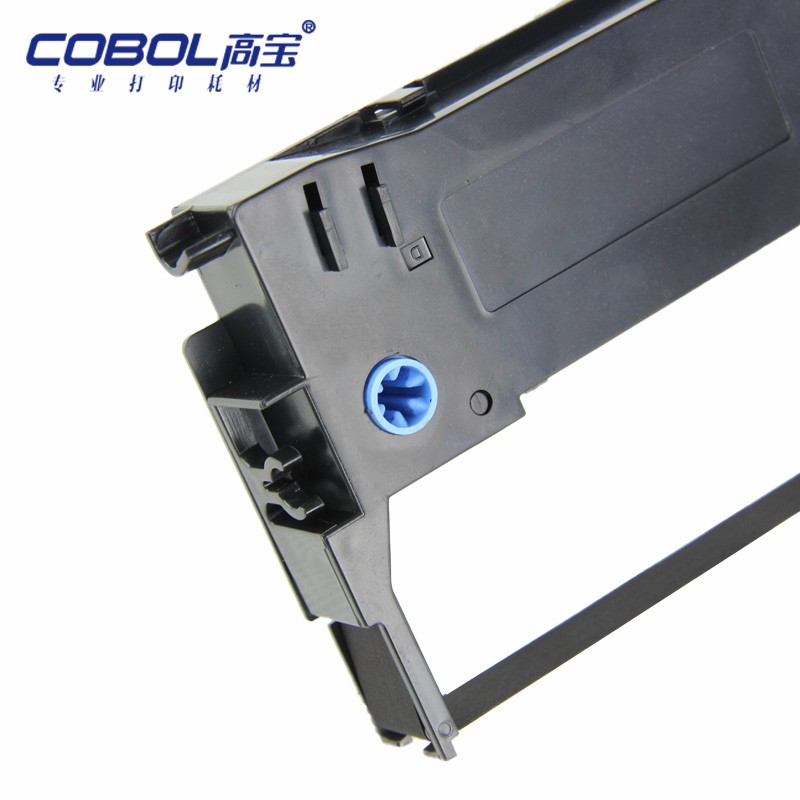
(Ribbon suitable for LQ 310 dot matrix printer)
How should the LQ 310 dot matrix printer be maintained and serviced?
To ensure the long-term stable operation of the LQ 310 dot matrix printer, professional maintenance tips include:
1. Regularly replace the ink ribbon
• When the print becomes light or the ink runs out, replace the ribbon promptly to avoid damaging the ink needle.
2. Clean the print head and paper path
• Prevent dust accumulation that affects print quality and paper feed smoothness.
3. Avoid prolonged idle operation
• Prevent excessive wear on the ink needle.
4. Regularly check the interface and driver
• Ensure stable communication to avoid data loss or printing anomalies.
The LQ 310 dot matrix printer's position in the office printing system
In modern office systems, the LQ 310 dot matrix printer isn't a general-purpose printer; rather, it's a specialized device designed for specific needs. Its purpose lies in providing a highly reliable, low-cost solution for multi-copy printing, making it irreplaceable for applications such as receipt printing, continuous reports, and industrial field documentation.
While its imaging technology may be slightly inferior to inkjet and laser printers in terms of precision, the LQ 310 dot matrix printer offers significant advantages in simultaneous multi-copy output, durability, and cost control. This explains its continued strong demand for back-end printing in many businesses and institutions.
Who is Foshan Shunde COBOL Industries Co., Ltd?
Established in 1992 in Shunde, Foshan, Guangdong, China, COBOL is a professional printing consumables manufacturer and trusted supplier. Our factory produces high-quality toner cartridges, printer ribbons, inkjet cartridges, inked nylon ribbons, and dot matrix ribbons.
We supply both domestic and international markets at competitive prices, offering wholesale discounts and customized solutions. Customers can request quotes for bulk purchasing, and our sales team ensures low price offers without compromising quality.

